An English Scrimshaw Decorated Tooth
An English Scrimshaw Decorated Tooth
Signed: ‘Waite’
whale tooth
Britain
19th Century
Size: 18.5 x 7 cm (7 ¹/₄ x 2 ³/₄ inches)
Signed: ‘Waite’
whale tooth
Britain
19th Century
Size: 18.5 x 7 cm (7 ¹/₄ x 2 ³/₄ inches)
An English Scrimshaw Decorated Tooth
Signed: ‘Waite’
whale tooth
Britain
19th Century
Size: 18.5 x 7 cm (7 ¹/₄ x 2 ³/₄ inches)
Signed: ‘Waite’
whale tooth
Britain
19th Century
Size: 18.5 x 7 cm (7 ¹/₄ x 2 ³/₄ inches)
To one side, a depiction of the ‘Foxhound’ sailing with full sail on calm seas, a polychromed decorated flag to the stern. To the reverse, the same ship in stormy seas, signed to the bottom left corner of the portrait: Waite.
By their artistic depictions the ‘scrimshander’ created the common impression of whaling as a romantic and exciting activity, and it was true that on such occasions as the chase and the catch there were periods of high adventure, danger and excitement. However, it was the fact that for most whale-men these times were so infrequent, that created the necessity for the craft of scrimshaw to occupy the long hours of dreary idleness spent on board ship. The longest whaling voyage on record is probably that of ‘The Nile’ of New London, which made a voyage lasting from 1858 to 1869. It was during the boredom of these voyages that the art of scrimshaw flourished giving the sailor a way of combating and enduring his idleness; polishing, carving and engraving the ivory teeth of the sperm whale he had helped to catch.
By their artistic depictions the ‘scrimshander’ created the common impression of whaling as a romantic and exciting activity, and it was true that on such occasions as the chase and the catch there were periods of high adventure, danger and excitement. However, it was the fact that for most whale-men these times were so infrequent, that created the necessity for the craft of scrimshaw to occupy the long hours of dreary idleness spent on board ship. The longest whaling voyage on record is probably that of ‘The Nile’ of New London, which made a voyage lasting from 1858 to 1869. It was during the boredom of these voyages that the art of scrimshaw flourished giving the sailor a way of combating and enduring his idleness; polishing, carving and engraving the ivory teeth of the sperm whale he had helped to catch.
Ex Private English collection
An English Scrimshaw Decorated Tooth
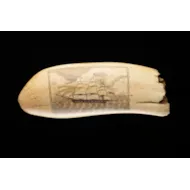
SOLD
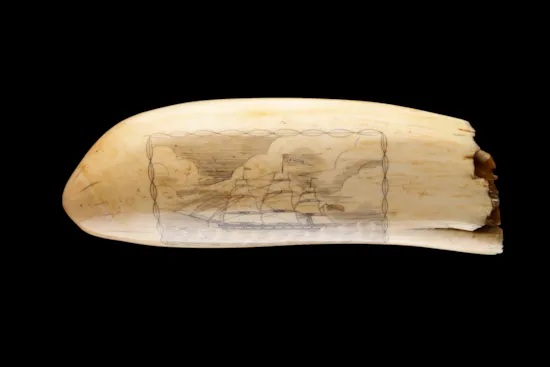
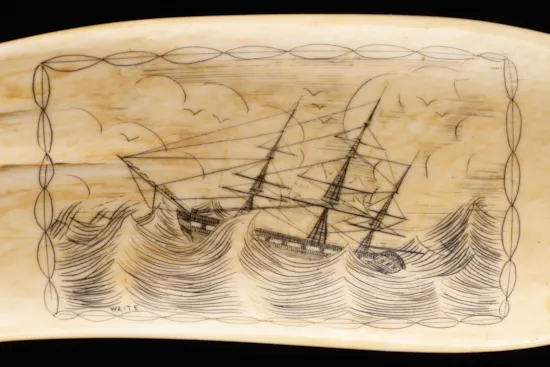
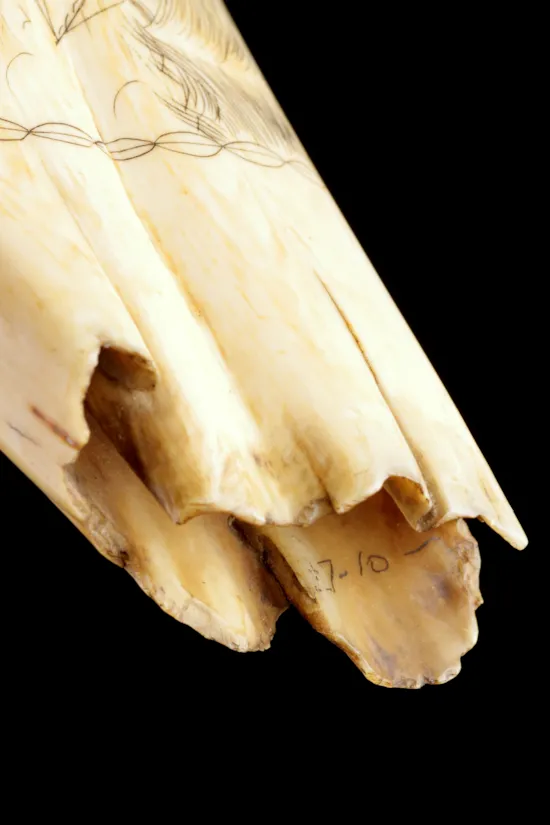
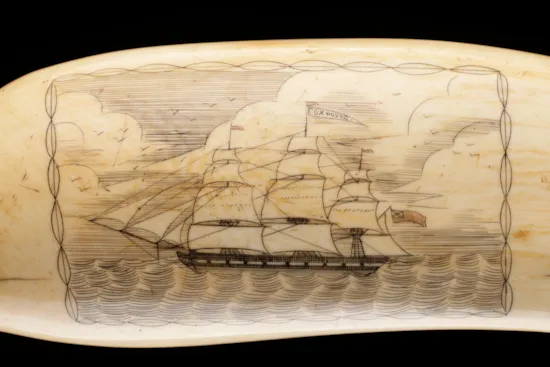




YOU MAY ALSO LIKE

